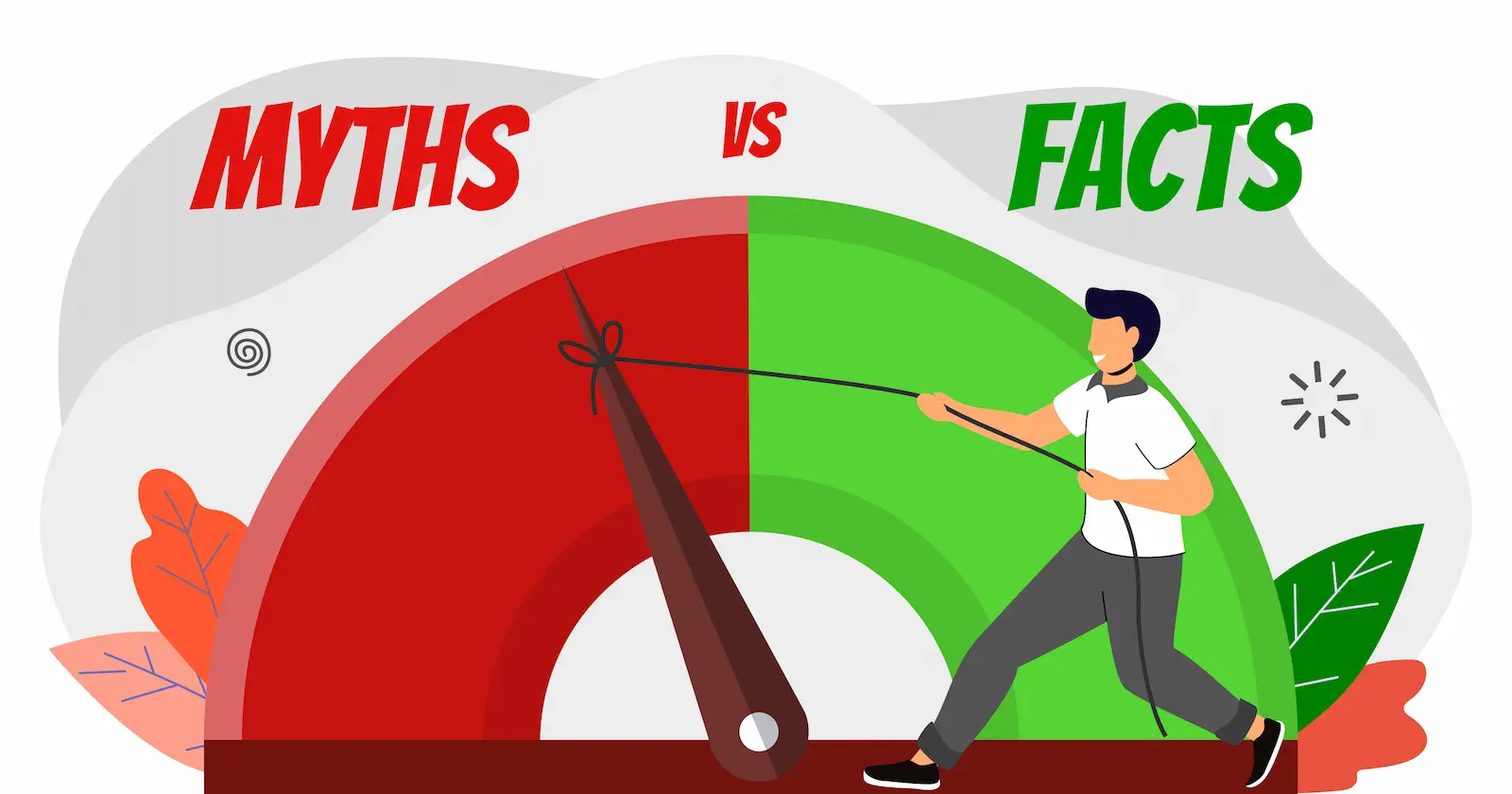If any of those arguments have stopped you pulling on your trainers, it's time to think again. Here, once and for all, Lets debunk nine of running's biggest myths.
1. I’m the Wrong Shape to Run
There is no such thing. Visit 5km running events around the world and you'll see why this argument holds no water. Runners of all sizes, shapes and ages come together to complete their 5K at whatever speed their legs will carry them. Some of them do indeed have the slim build you'll see on all elite runners, but most of them won't. And it really doesn't matter.
Fitness coach Ankita Sahni6, says, “Shape, size, height or weight don’t matter. Running is extremely effective against cardiovascular diseases. It’s very good for your heart health and mental health.”
Studies show1 that moderate-intensity exercise training – in this case running – can help a person lose weight and improve their fitness. You may not run as rapidly as an elite runner, and you may never have their body shape, but that doesn't mean you cannot run or feel the benefits they feel.
2. You Need Expensive Kit to Be Able to Run
Running is one of the least expensive sports you can take up, the ultimate try-before-you-buy sport. Yes, if you catch the bug you can upgrade your gear to include the engineered fabric running top, the GPS watch, a better pair of running headphones, a running backpack with built in hydration and the cutting-edge shoes that will cushion your feet in ways you can only dream about, but to begin with you don’t need any of them.
Ankita says, “Running is one of the least expensive exercises you can do and it’s extremely effective. All you really need are comfortable running shoes, socks, shorts or track pants and a T-shirt. When it’s sunny outside, wear a cap. In the colder months, add on a tshirt or light jacket. There is really not much you need to spend on.”
Your shorts and shirt don’t need to be running-specific to begin with, as long as they’re comfortable and don’t chafe. And you can time your run on your phone using one of the many free running apps2.
Make sure, however, that you wear running-specific socks and shoes as these are built to support your feet and keep you comfortable - even if you aren’t running love distances or at great speeds.
3. Everyone is going to Be Looking at Me
A surprisingly large number of people are put off running because they fear people will stare at them as they huff and puff their way past. Much of the doubt is rooted in the fear that they will look slow, ungainly, sweaty and red in the face, and that their form will not adhere to any manual of running.
Ankita suggests focusing on yourself instead of those around you, saying, “Consider exercise as meditation and practice mindfulness. You are only with yourself; you are working out for yourself. So your entire focus should be on yourself - not on the people around you.”
Vaishali S, from Hyderabad, who started running a year ago, says, “I used to go at dawn because I knew there would be fewer people about. I was very self-conscious. But I soon realized that no one cares! Everyone is out there exercising for themselves and trying to do their best. They can’t be bothered to stare and judge.”
4. Running Hurts
Ankita says, “All exercises can feel uncomfortable at the start. Muscle soreness is absolutely fine. When we work out the muscles tear a little bit so you will feel some pain. That’s why it’s important to rest and build up your stamina slowly. Run three to four times a week for 30-40 minutes and the pain will eventually subside.”
Running can be uncomfortable when you are pushing yourself to be faster. If you are running with an injury, it can really hurt. Don’t do it - you should be resting, not running.
Most people feel pain because they set off too fast. Start slowly and give yourself time to warm up properly before going for higher speeds. To avoid discomfort, many coaches suggest running at a pace that allows you to hold a conversation with a running partner.
5. Running is Bad for Your Knees
An argument almost as old as running itself. Many non-runners will very animatedly tell you that running can only damage the knees and joints and lead to arthritis in later life. How could it not be damaging, they claim, when your soft foot pounds hard ground for kilometer after kilometer?
The truth is that no studies have shown that running is bad for your knees, but numerous studies suggest the opposite. One such study3 followed runners and non-runners for almost 20 years and found, through X-rays, that signs of arthritis were present in the knees of 20 percent of the runners, but 32 percent of the non-runners. Another study4 found that running strengthens your muscles and joints and may actually help prevent knee injuries.
However, this doesn’t mean that you shouldn’t take care. Ankita says, “Running per se is not bad for your knees but if you already have any ailments such as arthritis or injuries, or if your doctor has advised against it, then you should avoid it. However, if you are healthy, running won’t harm your knees. In fact, it will strengthen your entire body.”
So running can be helpful if done at the right level, and that it comes with a host of benefits, including maintaining a healthy weight, which we know is very important to joint health. The key is to find a level of running that suits you and increase your running gradually. Working on your leg strength, making sure you have the correct running shoes and including sufficient rest days in your training also help.
6. I’m Too Slow to Be a ‘Real’ Runner
Reluctant runners may feel their running speed is too slow, that it doesn’t measure up to others, yet the beauty of running is that nobody can tell how far or at what speed you’ve run. So you’re red-faced, short of breath and moving at just above walking pace after a quarter of a mile? You know how far you've run, but others don’t know that you haven't run 20 kilometers or a five-minute kilometer to get to that state of exhaustion. Ankita adds, “A real runner, according to me, is someone who is consistent, patient and who is continuously trying to improve.”
7. Real Runners Don’t Walk
Many beginners see walking as a sign of weakness or failure, but that's certainly not the case. Most running program training combines running with walking. As time goes by, the aim is for you to do more running and less walking, but the walking element is key to developing as a runner.
Ankita says, “Walking is very good for our health - diabetes, blood pressure, and thyroid. It’s great for our mood as well. A combination of running, walking, brisk walking, and spot jogging are excellent means of interval training. Walking is completely okay. If you find steep hills difficult, just walk up. It may slow you down at first but you will probably not add too many minutes to your whole route. Think of walking as part of your run. Don’t think of it as a shortcoming.”
Even at elite level, run-walking has a recognized benefit. In 1973, Olympian Jeff Galloway pioneered the Run-Walk-Run method5 in the US as a way to encourage beginners to persevere with their training. Over time, he found that runners ran an average of seven minutes faster in a 13.1-mile race when they followed the correct Run-Walk-Run ratio. He also found that it helped them reduce the number of injuries they sustained, and that it helped beginners find greater motivation to carry on running.
8. Running is Boring
There's no denying that running can be very boring. Pounding the same route or terrain on every run can get tedious, in the same way that eating the same sandwich for lunch everyday becomes very boring. Running is only boring if you allow it to be. Varying your routes can break the monotony. Try new roads, find trails or drive farther out to explore new territory when you need a change.
If you need added entertainment, stick earbuds in and listen to a playlist, audiobook or a podcast as you run, but be extra aware of your surroundings and any traffic at all times. Or find a running companion and talk as you run – at a pace that's comfortable to talk about TV, the kids or anything else that comes to mind.
If your running is confined to a treadmill, varying the incline or speeds you're running at will also help. If you’re outdoors, play around with your speeds to liven things up. For example, choose a target ahead – a parked car or lamppost – and sprint to it. Once you reach, you can get back to your regular pace. This can help increase your speed, too.
9. I’m Not a Runner Unless I Race
“You don’t have to have a specific accomplishment to be a runner. Run for yourself, your health and your mood and nobody else,” says Ankita.
The racing experience can be really fun and motivating but it’s definitely not what defines a runner. If you do decide to race, start easy with a 5 or 10km race and run and walk as much as you feel necessary. You’ll still get to experience the atmosphere of an organised event.
Many runners avoid organized races for fear of being embarrassed. The recurring nightmare for many involves traipsing in when everyone has long since finished. New runner Vaishali too feared coming in last when she participated in her first half marathon. She says, “I was so scared of being the slowest. However, it was actually such a positive experience. You meet other runners who are nothing but encouraging and I think it actually helped my pace more.”
Running is a great way to keep healthy and active. It’s a challenging activity that requires discipline of the mind as well as the body. However, it is important to remember that there are plenty of factors that contribute to a healthy body, including a balanced diet and lifestyle, with adequate stress management. Genetics also plays a significant role in our health. That’s why it’s important to take adequate precautions, for health emergencies that may pop up in the future, by purchasing good health insurance. Future Generali Heart and Health Insurance covers up to 59 critical illnesses, giving you access to healthcare when you most need it without having to worry about hospitalization costs.





Comments